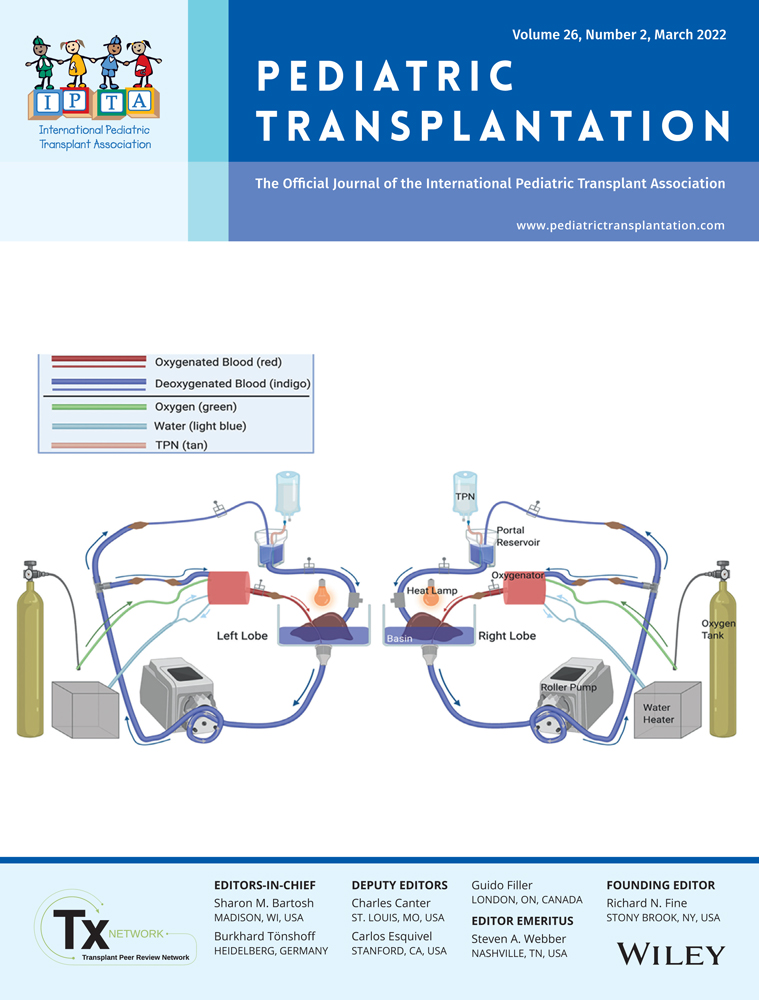Understanding disparities and barriers associated with pediatric transplant evaluation and time to listing: Moving toward a more comprehensive picture
Funding information
University of Colorado School of Medicine, Department of Surgery Academic Enrichment Pilot Project Fund; Donor Alliance Foundation; Supported by NIH/NCATS Colorado CTSA Grant Number UL1 TR002535. Contents are the authors' sole responsibility and do not necessarily represent official NIH views
Abstract
Background
Delayed time to listing (TTL) for pediatric transplant patients is associated with increased risks of mortality and morbidity. The full range of health disparities, sociodemographic factors, and other barriers associated with delays in listing in the pediatric transplant candidate evaluation process has not been fully examined.
Methods
Retrospective chart reviews were conducted for 183 kidney, liver, and heart transplant candidates ages 0–18 who were referred for evaluation during 2012–2015. Demographic information and potential barriers (e g., social/medical factors, financial concerns) were gathered from pre-transplant evaluations and included in a comprehensive model to evaluate mechanisms that explain differences in TTL. Descriptive statistics, logistic regression models, Cox proportional hazards models, and path analysis were used for analyses.
Results
Candidates included 26.8% heart, 33.3% liver, and 39.9% kidney patients. The most common barrier to listing was financial (71.6%), followed by caregiver psychological or substance use (57.9%), and medical problems (49.7%). Higher age, kidney, and liver organ type (relative to the heart), and presence of social, medical, administrative/motivation, and financial barriers were all directly associated with longer TTL. Public insurance was indirectly associated with TTL through social, administrative/motivation, and financial barriers. Organ type was indirectly associated with TTL through financial barriers.
Conclusions
Results suggest social problems, administrative issues, and financial issues act as mechanisms through which insurance type and liver transplant candidates face increased risk of delays in transplant listing time. There are numerous clinical implications and interventions that are warranted to reduce TTL among pediatric transplant candidates with co-occurring barriers.
CONFLICT OF INTEREST
None.
Open Research
DATA AVAILABILITY STATEMENT
De-identified data that support the findings of this study are available from the corresponding author upon reasonable request.




